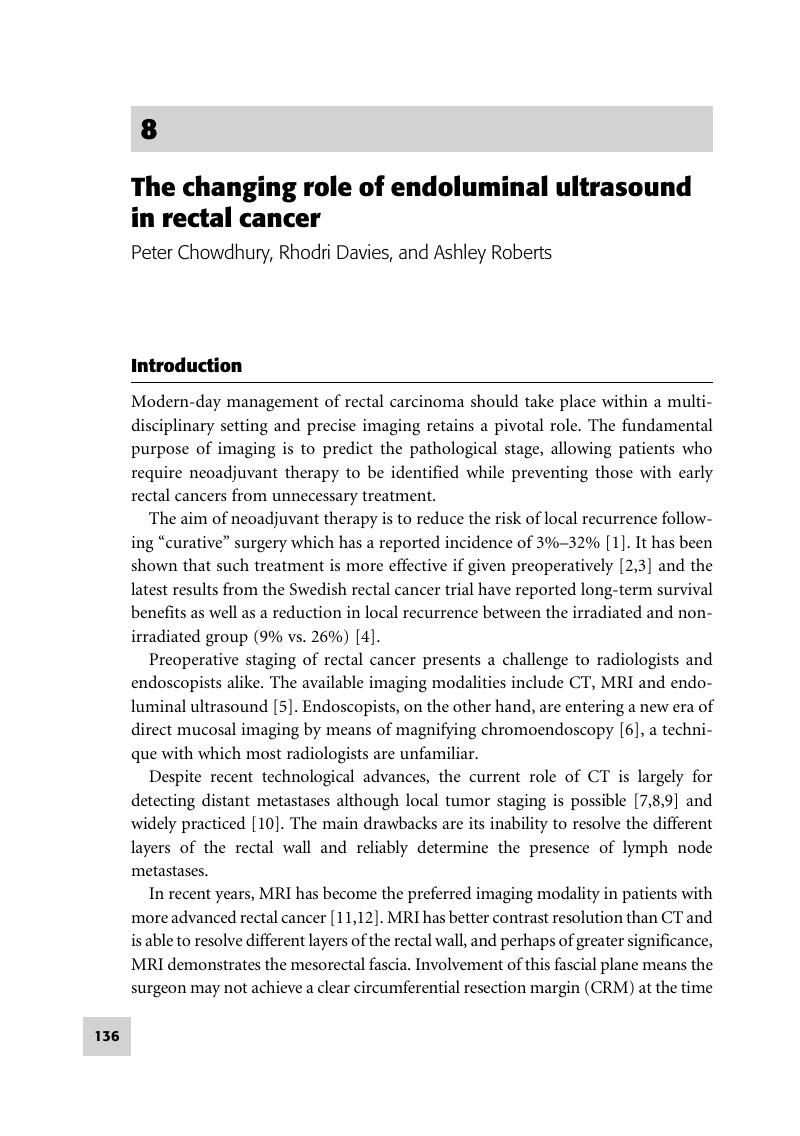Book contents
- Frontmatter
- Contents
- Contributors
- Series foreword
- Acknowledgements
- 1 The clinical presentation of colorectal cancer
- 2 Pathology for the radiologist: pathological insights into colorectal cancer
- 3 Screening for colorectal cancer
- 4 The surgical approach to colorectal cancer
- 5 Laparoscopic surgery
- 6 Chemotherapy
- 7 Radiotherapy in colorectal cancer
- 8 The changing role of endoluminal ultrasound in rectal cancer
- 9 CT staging
- 10 MRI staging
- 11 Imaging of metastatic disease
- 12 Patterns of recurrence following therapy for rectal cancer
- Index
- References
8 - The changing role of endoluminal ultrasound in rectal cancer
Published online by Cambridge University Press: 07 September 2010
- Frontmatter
- Contents
- Contributors
- Series foreword
- Acknowledgements
- 1 The clinical presentation of colorectal cancer
- 2 Pathology for the radiologist: pathological insights into colorectal cancer
- 3 Screening for colorectal cancer
- 4 The surgical approach to colorectal cancer
- 5 Laparoscopic surgery
- 6 Chemotherapy
- 7 Radiotherapy in colorectal cancer
- 8 The changing role of endoluminal ultrasound in rectal cancer
- 9 CT staging
- 10 MRI staging
- 11 Imaging of metastatic disease
- 12 Patterns of recurrence following therapy for rectal cancer
- Index
- References
Summary

- Type
- Chapter
- Information
- Colorectal Cancer , pp. 136 - 156Publisher: Cambridge University PressPrint publication year: 2007



